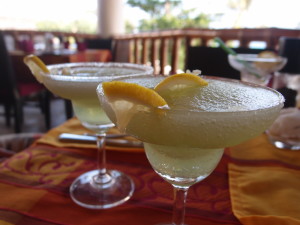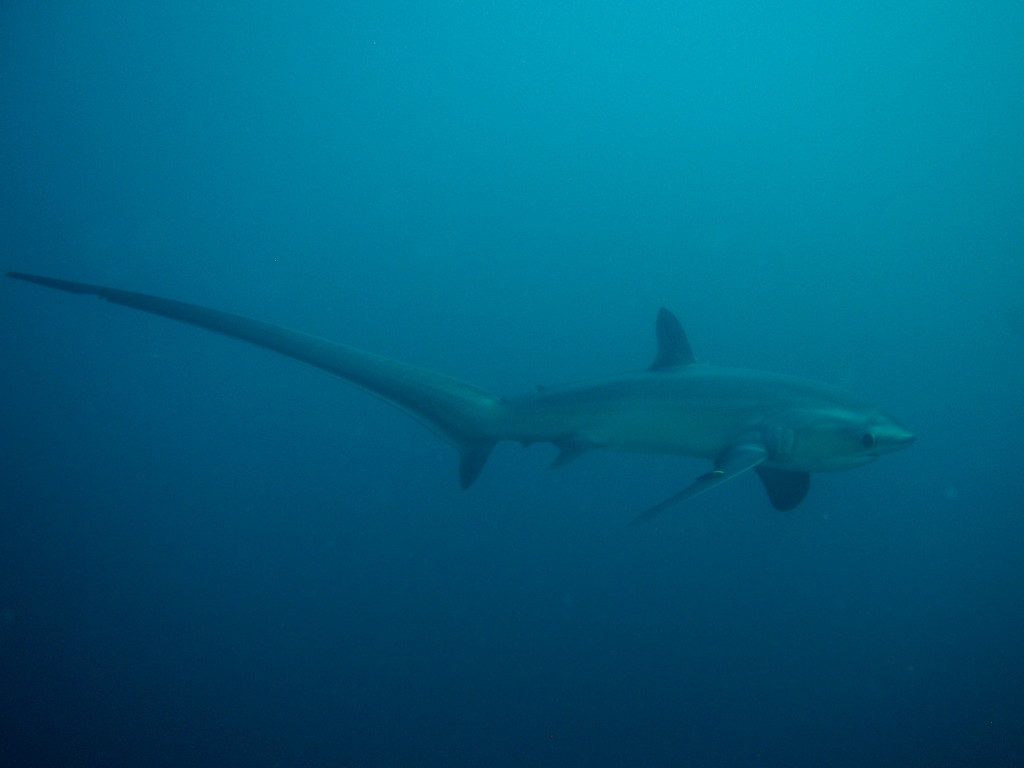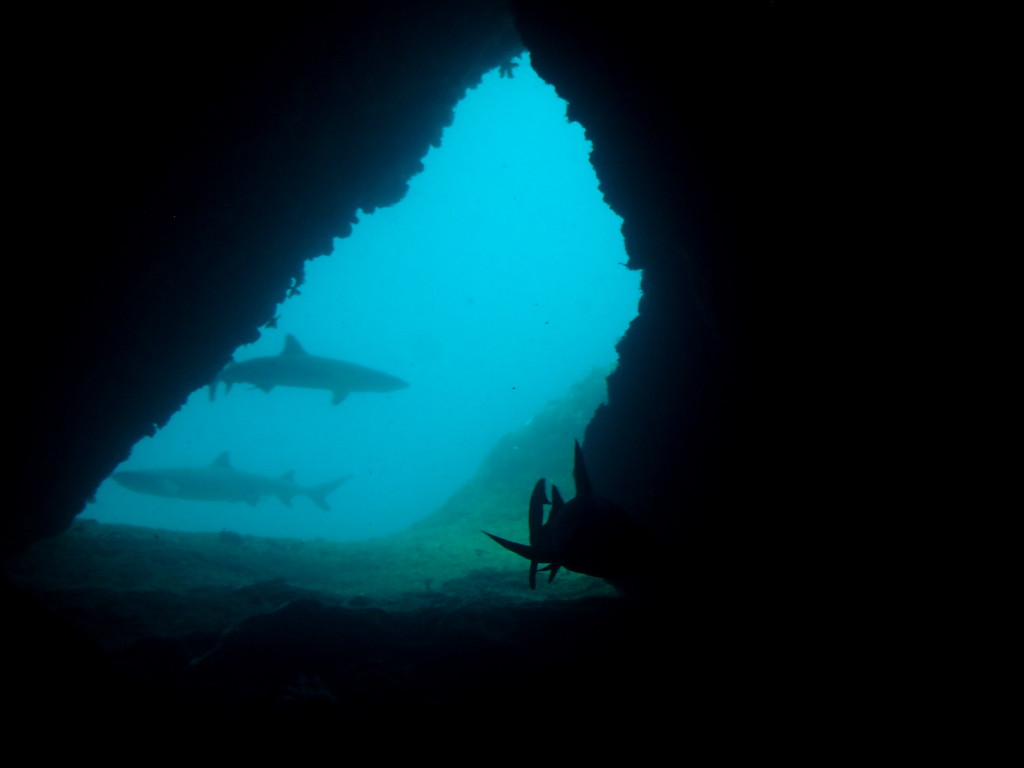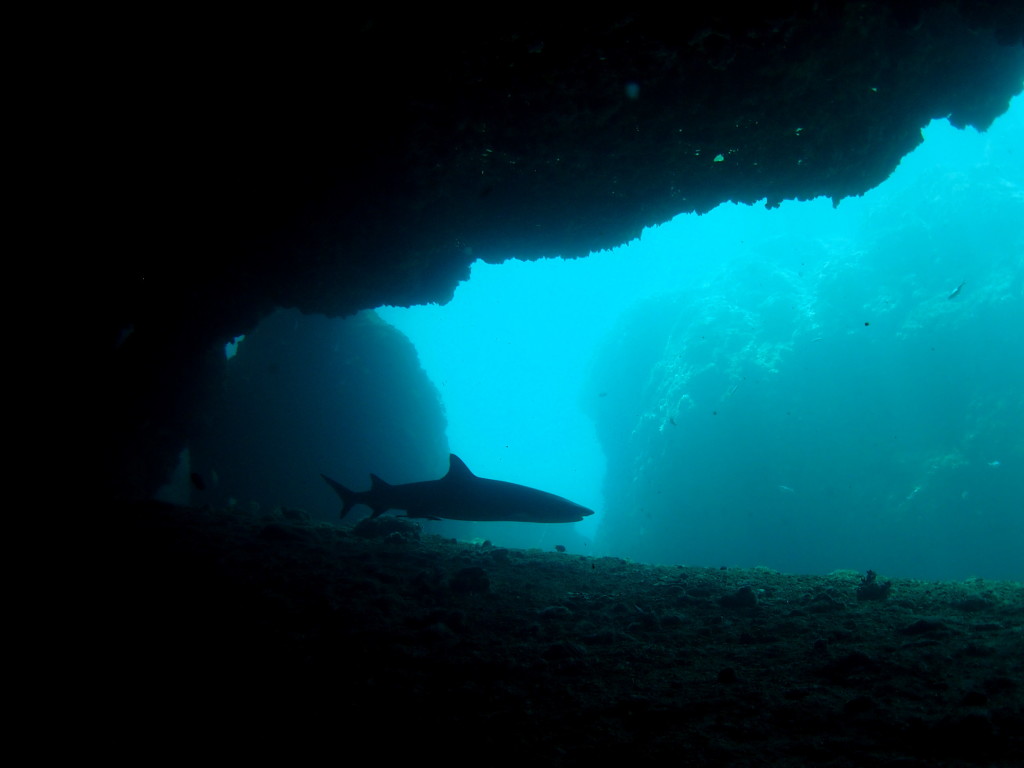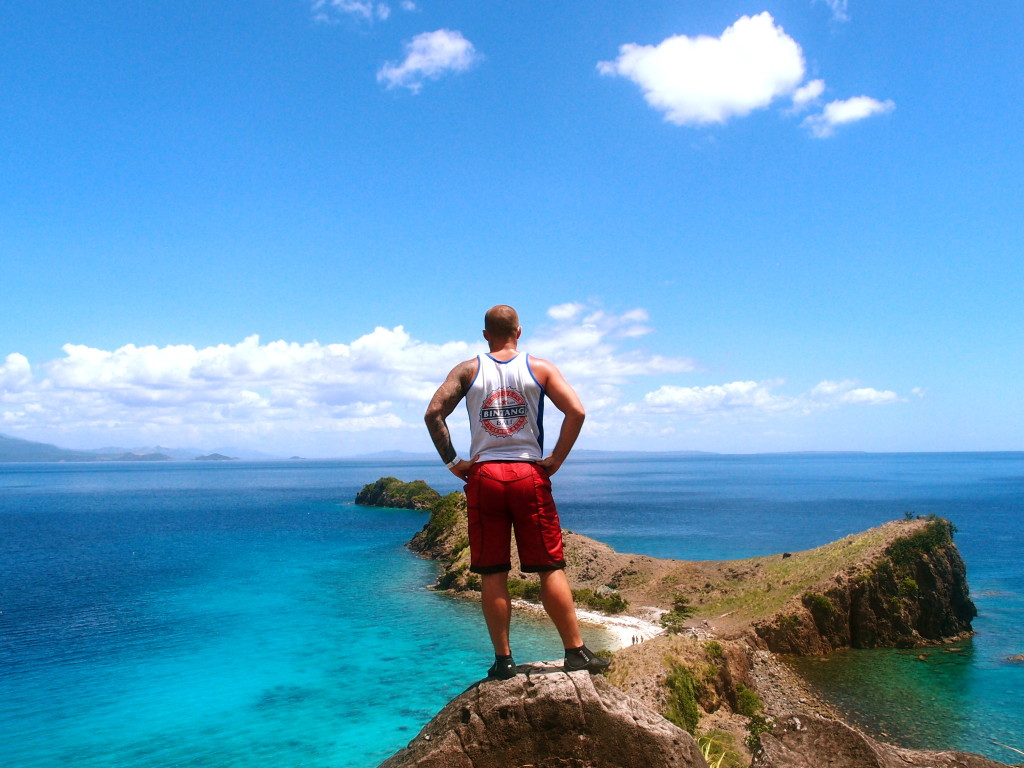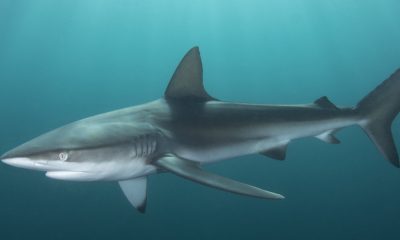News
Mat’s Philippines Trip 2015: Part 3
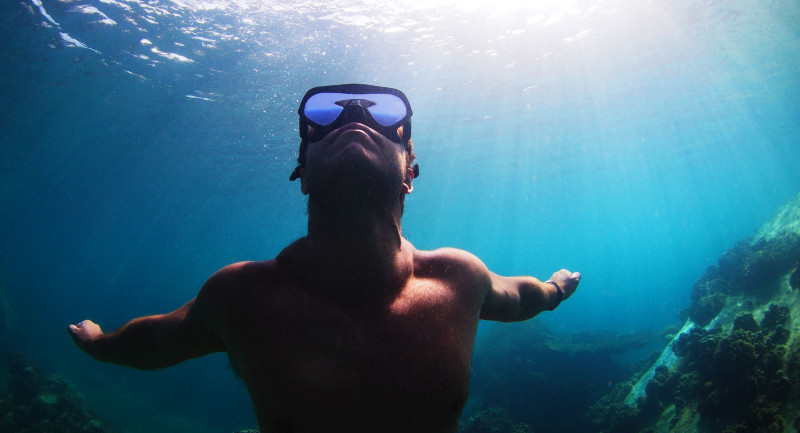
Read Part 1 here. Read Part 2 here.
Good times on ‘Bad Easter’
It was 4AM, we were in the back of a minivan taxi and we had been on the road for an hour already. The bumpy ride and enthusiastic air conditioning made a return to slumber impossible for me; as I sat next to a snoozing girlfriend my mind drifted to a remark that I had read back in England about our next destination. Some 500 years ago when the Spaniards first landed on a small island that lies north of Cebu they were stranded on the rocks and eaten alive by hordes of mosquitos- they sensibly decided to call the place Malapascua as it literally translates as ‘Bad Easter’. I hoped that times had since changed and that the thousands of divers that visit the tiny (just 2 miles long in fact) island each year are testament to the more comfortable conditions that can be found there… plus Easter was the previous weekend so I was sure we would be fine.
Having reached Malapascua the ‘adventurous’ way on two public boats from Leyte, we were very much ready for some well deserved R&R. Our time at Sogod Bay was great but we hoped for a splash of luxury for our next week. Arriving on the western side of the island we jumped on the back of two obliging motorcycle taxi’s, clutched onto our bags and whizzed through the sandy back roads toward Bounty beach. I wasn’t overly impressed with the surroundings that the public boat moored up on but felt confident that Bounty Beach would live up to it’s reputation as an idyllic picture postcard destination.
We arrived at Ocean Vida from the back roads; I say roads but actually Malapascua has no cars and so these roads are better described as dirt tracks. Our first look at Bounty Beach did not disappoint- soft white sand beneath our tired feet and sparkling blue water before our eyes. Within minutes we were sat in the intimate open air restaurant with a welcome drink as our bags were taken to our room. Julz is the resort manager and has such a warm and friendly manner – she’s perfect for the job and made us feel welcome right away. Ollie is the dive centre manager and having finished our complimentary fruit juice we strolled next door to meet him and confirm our diving schedule. As luck would have it the afternoon boat was going out for a single dive later that day. It turned out to be an easy sandy bottom affair that did produce a couple of bold little cuttlefish, scuttling hermit crabs and a school of catfish hiding in a small wreck of some kind – nothing incredible but a pleasant dive nonetheless. We got back just in time for happy hour; every 4-6pm cocktails are two for the price of one and at just 150 pesos (£2.30 approx.) our rounds were only coming to £10…well why wouldn’t you order four each at that price? Well one very good reason is that our dives the following day were scheduled for 6am and I for one really didn’t fancy getting up so early to jump on a dive boat with a sore head.
Our alarm buzzed at 05:45…a whole ten minutes earlier than it needed to be buzzing for a 06:00 departure if you ask me, but then I’m reminded that I don’t have contact lenses to put in and hair to tie up, and don’t I have a camera to be prepping… all solid points from Samantha. We rubbed our eyes and made our way to the dive centre just a few paces from our balcony – the sun made it’s appearance shortly after and before long we were on our way to the site that has put Malapascua on the diving map; Monad Shoal.
Each morning arguably one of the world’s most graceful sharks with its elegant ribbon like tail ventures into the shallower waters at Monad Shoal. Rising from depths that can reach 1600ft the large dark eyes of the Thresher shark can be seen emerging through a thermocline at a more tolerable diving depth of just 100ft. It’s here where divers hover calmly at the edge of a wall and patiently wait for close encounters with these bizarre looking animals. The dive is spent doing just that – waiting rather than diving, but when a 4m shark cruises within just a few feet of your mask it really is worth the wait. We dived Monad Shoal on three separate occasions and had encounters every time- it’s fair to say that if seeing Thresher sharks is on your bucket list then this has to be the best place in the world to as good as guarantee a sighting.
The second morning at Malapascua was sublime. We took our chances at Kimud Shoal; close to Monad it is here that another species of shark is occasionally spotted, especially during the month of April. We didn’t hold out much of a hope; I knew for a fact that a number of Divemasters that had been working on the island and dived Kimud more than a dozen times this month had yet to see this most unusual looking shark. We descend and within seconds a Manta Ray swoops past – a good omen? Venturing away from the security of the wall behind us we hover in the blue – all around us and beneath us, nothing but blue water. The sharks are out there somewhere. After 20 minutes of emptiness we make our way back towards the boat and then she emerged – our first Hammerhead sighting. It was brief… nothing more than a glimpse, but then minutes later two more ‘hammers’ swim by, just as fleeting and every bit as satisfying. We were the only people on the boat to see them and fellow divers struggled to hide their envy. As we enjoyed our breakfast back on land with views of the sparkling morning sunshine as it danced atop the calm blue sea we gushed over how lucky we had been; after all it’s not often that you see Thresher Sharks, Manta Rays and Hammerheads all before you’ve had your cornflakes.
Naughty Night Dives & The White Tips of Gato
Mandarin fish are very photogenic, that’s undeniable; with their frilly fins and colourful markings they are quite a pretty fish indeed. Malapascua is one of a few destinations in the Philippines where you can head out to sea at dusk, settle down in just the right spot and much like the Thresher dive… sit and wait. Now I don’t often feel the cold, but when I opted to wear only my ‘rashy’ (I’ve never been fond of wetsuits) in water that was closer to 26 degrees than 27 I soon regretted the decision as we spent a full 30 minutes without moving whatsoever. Beneath us in the maze like hard corals were the Mandarin fish we had come out to see – you know… doing it. That’s right. For those in the know this comes as no surprise as this is what ‘the Mandarin Fish dive’ is all about. We sit… we wait… and if we’re looking in the right spot, a male will get lucky with a larger female and they will float harmoniously together, drifting in an upward fashion as though they are being beamed up by an uncontrollable force. Almost as soon as this behaviour begins, it is over and we cast our eyes to another patch of coral to snoop on the next unsuspecting pair. They were lovely to see and I’m glad I ticked the box, but the 30 minutes afterwards spent finding sea horses, cuttlefish and a particularly active octopus (not to mention warming up) were more enjoyable I’d say; maybe I’m just not the ‘peeping Tom’ sort.
I had heard that you go to Malapascua for the Threshers but you leave remembering Gato Island. Expectations were set reasonably high as that simple sentence remained etched in my mind as we took to the water to experience it for ourselves. A 45 minute boat ride away from Bounty Beach is a solitary rocky outcrop that divers have come to call Gato. Compared to the sandy bottom dive on our first day this was a heavenly playground of boulders, swim-thru’s and corals all with secrets to uncover. Floating amongst one coral bommie was a stunning pair of Ornate Ghost pipefish; in the distance were mating cuttlefish, circling above were filter feeding mackerel with their distinctive and amusing wide gape…but we were here for the main attraction. As the current gently pushed us along a swim thru we were greeted by not one or two but three circling white tip sharks. We exit the tunnel and make our way into another cluster of enclosed boulders to find three more white tips cruising and circling with a calm and controlled presence; they clearly rule the roost at Gato. The last 10 minutes of the dive was spent playing in the shallows where the light pierced the surface of the water and we swam in between the boulders of the island. I love a varied dive site and Gato Island provides enough variety to keep most divers entertained; critters, sharks and intriguing topography – a ‘must do’ dive for anyone visiting Malapascua.
An excursion to Sambawan Island
The local dives within easy reach of Bounty Beach are nothing spectacular – I’ve made no secret of that fact. Diving at Malapascua is all about the Thresher sharks and Gato Island. When weather conditions allow however, it’s possible to venture further North to Sambawan Island; a small and beautiful place made up of three islets. Local Filipinos visit Sambawan during the holiday periods and at weekends to enjoy the sand and the snorkelling – the dive sites around the island have an abundance of hard and soft corals and more fish life than at our Malapascua base. It takes around 3 hours to get there and the day begins with a Thresher dive at Monad shoal. The glorious weather ensured that the relatively long journey by boat was pleasant and we enjoyed a BBQ feast on arrival. Uncharacteristically the viz was quite poor (can’t be helped) and I only have one photo of my buddy with a turtle to show for the day, but it was clear to see that the dive sites here are definitely worth a visit; especially if like me you enjoy spending the day at sea.
Our week at Malapascua delivered everything that we hoped for and more. In just six days we were able to add three more species of shark to our Philippines sightings – Whale sharks, Threshers sharks, Hammerheads and White Tips if you’re keeping count. We watched the beautiful Mandarin fish as it got down and dirty in front of a baying crowd of camera laden voyeurs. We enjoyed sunrises on the boat and sunsets from our balcony; great food, tasty cocktails, and relaxing massages…but we still had a few more days left before our return to England loomed (I feel that gloomed is more accurate but I’m not convinced it’s a word!) Our final stretch would take us to Moalboal and whilst we were excited to be off somewhere new, we were equally saddened to be leaving the island paradise of Malapascua; not such a ‘Bad Easter’ these days that’s for sure…
To be concluded!
Mat is a travel consultant for Dive Worldwide.
Discuss this article in the Scubaverse Forum.
News
Dive Worldwide Announces Bite-Back as its Charity of the Year

Over the next 12 months, specialist scuba holiday company Dive Worldwide will be supporting Bite-Back Shark & Marine Conservation with donations collected from client bookings to any one of its stunning dive destinations around the world. The independently-owned operator expects to raise £3000 for the UK charity.
Manager at Dive Worldwide, Phil North, said: “We’re especially excited to work with Bite-Back and support its intelligent, creative and results-driven campaigns to end the UK trade in shark products and prompt a change in attitudes to the ocean’s most maligned inhabitant.”
Bite-Back is running campaigns to hold the media to account on the way it reports shark news along with a brand new nationwide education programme. Last year the charity was credited for spearheading a UK ban on the import and export of shark fins.
Campaign director at Bite-Back, Graham Buckingham, said: “We’re enormously grateful to Dive Worldwide for choosing to support Bite-Back. The company’s commitment to conservation helps set it apart from other tour operators and we’re certain its clients admire and respect that policy. For us, the affiliation is huge and helps us look to the future with confidence we can deliver against key conservation programmes.”
To launch the fundraising initiative, Phil North presented Graham Buckingham with a cheque for £1,000.
Visit Dive Worldwide to discover its diverse range of international scuba adventures and visit Bite-Back to learn more about the charity’s campaigns.
MORE INFORMATION
Call Graham Buckingham on 07810 454 266 or email graham@bite-back.com
Gear News
Scubapro Free Octopus Promotion 2024
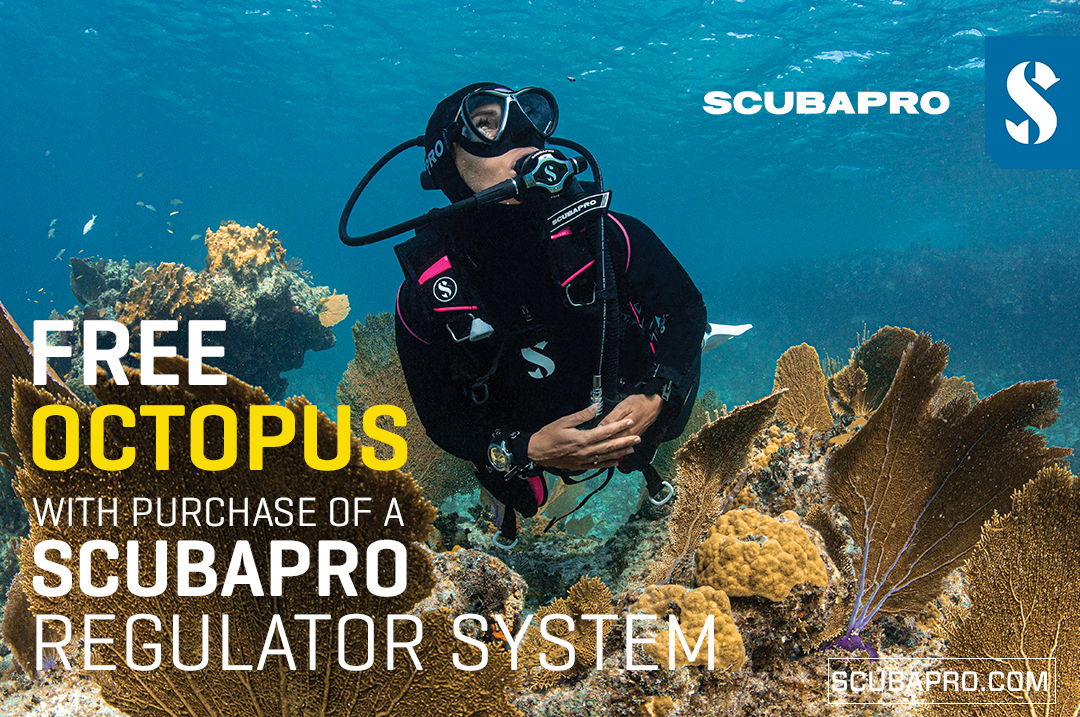
Free Octopus with every purchase of a SCUBAPRO regulator system
Just in time for the spring season, divers can save money with the FREE OCTOPUS SPRING PROMOTION! Until July 31st SCUBAPRO offers an Octopus for free
with every purchase of a regulator system!
Get a free S270 OCTOPUS with purchase of these combinations:
MK25 EVO or MK19 EVO with A700
MK25 EVO or MK19 EVO with S620Ti
MK25 EVO or MK19 EVO with D420
MK25 EVO Din mit S620Ti-X
Get a free R105 OCTOPUS with purchase of the following combinations:
MK25 EVO or MK19 EVO with G260
MK25 EVO or MK17 EVO with S600
SCUBAPRO offers a 30-year first owner warranty on all regulators, with a revision period of two years or 100 dives. All SCUBAPRO regulators are of course certified according to the new European test standard EN250-2014.
Available at participating SCUBAPRO dealers. Promotion may not be available in all regions. Find an authorized SCUBAPRO Dealer at scubapro.com.
More information available on www.scubapro.com.
-

 News3 months ago
News3 months agoHone your underwater photography skills with Alphamarine Photography at Red Sea Diving Safari in March
-

 News3 months ago
News3 months agoCapturing Critters in Lembeh Underwater Photography Workshop 2024: Event Roundup
-

 Marine Life & Conservation Blogs3 months ago
Marine Life & Conservation Blogs3 months agoCreature Feature: Swell Sharks
-

 Blogs2 months ago
Blogs2 months agoMurex Resorts: Passport to Paradise!
-

 Blogs2 months ago
Blogs2 months agoDiver Discovering Whale Skeletons Beneath Ice Judged World’s Best Underwater Photograph
-

 Marine Life & Conservation2 months ago
Marine Life & Conservation2 months agoSave the Manatee Club launches brand new webcams at Silver Springs State Park, Florida
-

 Gear Reviews3 months ago
Gear Reviews3 months agoGear Review: Oceanic+ Dive Housing for iPhone
-

 Gear Reviews2 weeks ago
Gear Reviews2 weeks agoGEAR REVIEW – Revolutionising Diving Comfort: The Sharkskin T2 Chillproof Suit



